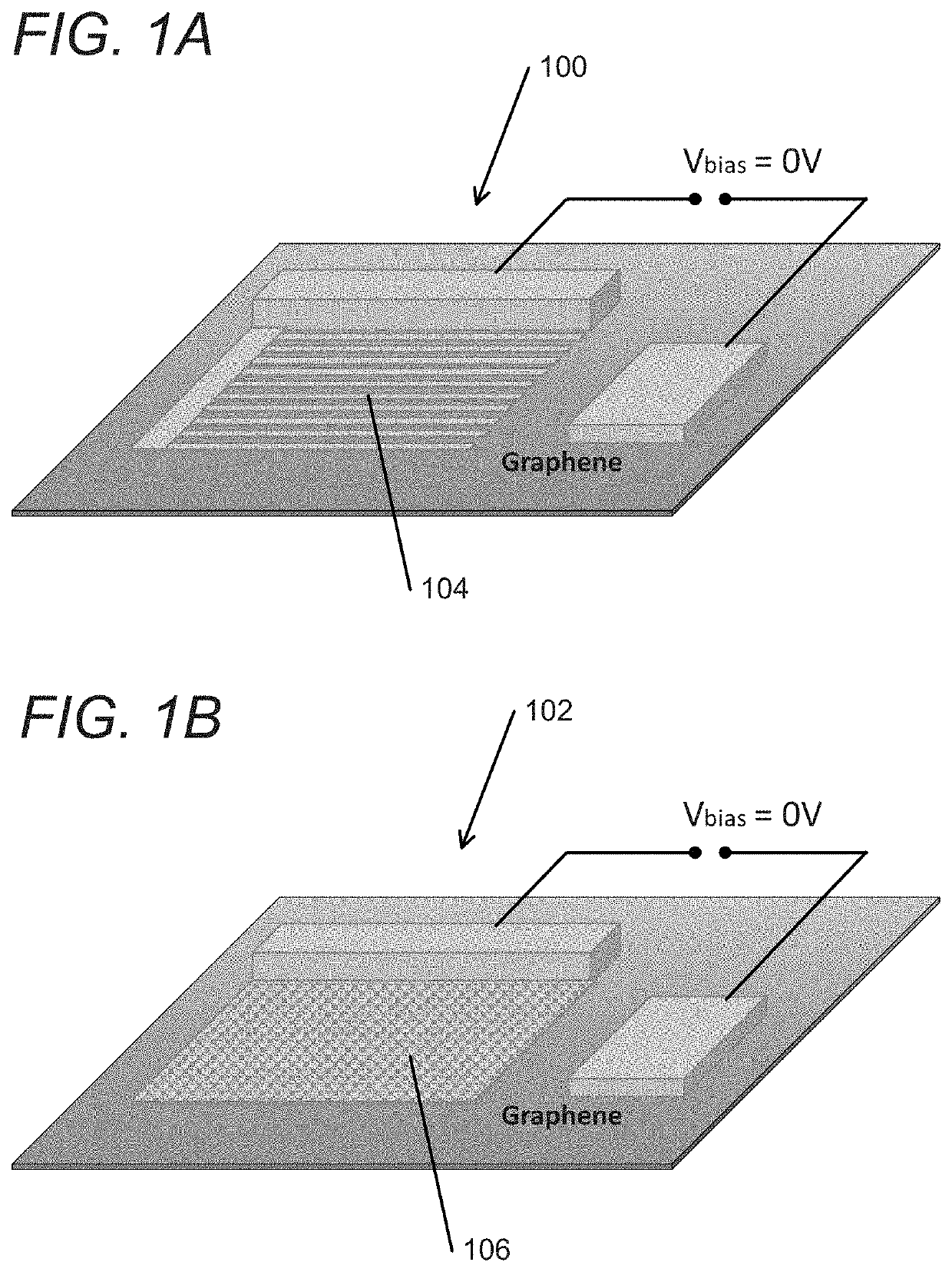Metallo-Graphene Nanocomposites and Methods for using Metallo-Graphene Nanocomposites for Electromagnetic Energy Conversion
a technology of graphene nanocomposites and nanocomposites, which is applied in the field of nanocomposites, can solve the problems of limited responsivity of graphene photodetectors, low optical performance, and inability to operate at certain optical wavelengths
- Summary
- Abstract
- Description
- Claims
- Application Information
AI Technical Summary
Benefits of technology
Problems solved by technology
Method used
Image
Examples
Embodiment Construction
[0060]Turning now to the drawings, metallo-graphene nanocomposites that can convert electromagnetic energy to an electric signal and methods of manufacturing metallo-graphene nanocomposites in accordance with various embodiments of the invention are illustrated. Metallo-graphene nanocomposites in accordance with many embodiments of the invention can be packaged to produce devices suitable for use in a variety of optoelectronic applications, such as (but not limited to) photovoltaics, metamaterials, transparent electrodes, saturable absorbers, chemical sensors, and photodetectors. In many embodiments, metallo-graphene nanocomposites can be defined as nanocomposites fabricated with a graphene layer for use as a photo-absorbing material. In some embodiments, the graphene layer is a monolayer. In other embodiments, the graphene layer is multi-layered. In a number of embodiments, the graphene layer is placed on a dielectric with a backside semiconductor or conductor for gating the graphe...
PUM
| Property | Measurement | Unit |
|---|---|---|
| responsivity | aaaaa | aaaaa |
| responsivity | aaaaa | aaaaa |
| size | aaaaa | aaaaa |
Abstract
Description
Claims
Application Information
 Login to View More
Login to View More - R&D
- Intellectual Property
- Life Sciences
- Materials
- Tech Scout
- Unparalleled Data Quality
- Higher Quality Content
- 60% Fewer Hallucinations
Browse by: Latest US Patents, China's latest patents, Technical Efficacy Thesaurus, Application Domain, Technology Topic, Popular Technical Reports.
© 2025 PatSnap. All rights reserved.Legal|Privacy policy|Modern Slavery Act Transparency Statement|Sitemap|About US| Contact US: help@patsnap.com



